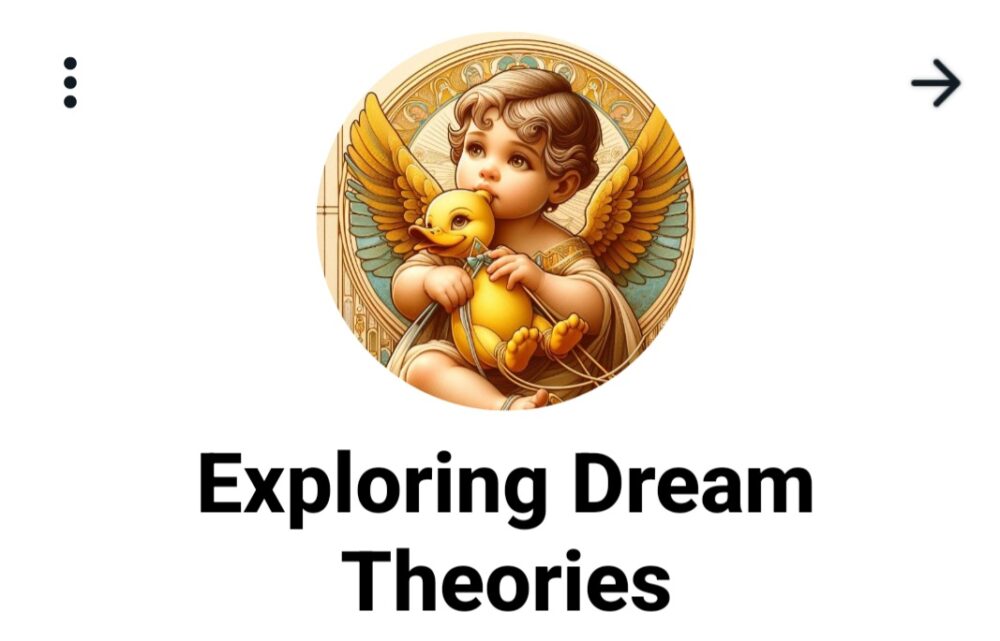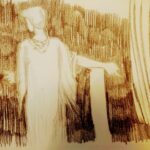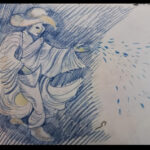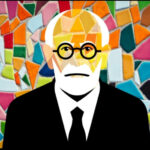René Magritte and Salvador Dalí, pivotal figures in the Surrealist movement, employed their distinctive symbolic languages to explore subconscious realms and provoke thought on the nature of reality. Utilizing insights from Hanna Segal’s Dream, Phantasy and Art alongside classical and contemporary dream theories and psychoanalysis, this analysis seeks to deepen understanding of their artistic philosophies and the psychological impacts of their work.
René Magritte: Subversion and Mystery
- Artistic Philosophy: Magritte’s provocative use of common objects in unexpected contexts challenges viewers’ perceptions, reflecting unconscious processes as described in psychoanalytic dream theory. This technique encourages a reflective, introspective viewer experience akin to dream analysis where ordinary symbols can carry extraordinary personal significance (Segal, 1991; Freud, 1900).
- Iconic Symbols and Themes: The Treachery of Images with its famous caption “This is not a pipe,” illustrates the conflict between perceived and represented reality, a central theme in dream interpretation where objects in dreams may not represent their real-world counterparts but rather, the hidden, subconscious thoughts of the dreamer (Foucault, 1983; Freud, 1900).
Salvador Dalí: Dreamscapes and Erotic Symbolism
- Psychoanalytic Influence: Dalí’s integration of Freudian theories, particularly those relating to dream symbolism and the unconscious, is evident in his surreal portrayals of personal psychodynamics. His works like The Persistence of Memory with its soft, melting clocks, explore the Freudian concept of time’s malleability in the dream state, illustrating the distortion of time and reality in unconscious thought (Freud, 1927; Lacan, 1977).
- Iconic Symbols and Themes: The recurring motif of melting clocks not only symbolizes temporal fluidity but also aligns with Freudian ideas on the manifestation of internal desires and anxieties in dreams. This reflects the broader psychoanalytic view that artworks, like dreams, are symbolic representations of the artist’s deepest fears and desires (Freud, 1927; Segal, 1991).
Symbolic Techniques: Magritte vs. Dalí
- Visual Strategies: Magritte’s visual paradoxes, such as a night sky in broad daylight in The Empire of Light, encourage a dual reality perception, resonating with psychoanalytic theories which propose that dreams can simultaneously convey multiple layers of meaning and reality (Segal, 1991; Jung, 1964).
- Emotional Engagement: Dalí, on the other hand, uses provocative and often unsettling imagery to evoke emotional response. Works like The Elephants are visually striking and emotionally charged, intended to stir the unconscious mind in ways similar to the confrontational nature of some psychoanalytic dream interpretation techniques (Lacan, 1977; Klein, 1975).
Comparative Symbolic Interpretation
- Freudian and Jungian Analysis: Dalí’s overtly Freudian themes frequently tackle issues of sexual anxiety and repression, as seen in The Metamorphosis of Narcissus. Contrastingly, Magritte’s work often incorporates Jungian elements like archetypal symbols and motifs that resonate on a universal level, suggesting a shared, collective unconscious (Jung, 1964; Freud, 1927).
- Therapeutic Implications: The Freudian approach in Dalí’s art can be seen as a means to directly confront and engage with individual neuroses, potentially offering insights into personal psychological states. Magritte’s approach, embodying Jungian themes, promotes a broader intellectual and reflective engagement, potentially aiding in the development of a more rounded self-awareness through symbolic interaction (Klein, 1975; Jung, 1964).
Conclusion
The integration of Hanna Segal’s psychoanalytic perspectives alongside foundational and contemporary psychoanalytic dream theories enriches our understanding of the symbolic complexities in Magritte and Dalí’s art. This analysis reveals how their distinct approaches to Surrealism—Magritte’s reflective subversions and Dalí’s confrontational dreamscapes—serve different psychotherapeutic purposes, highlighting the role of art as a medium for exploring and understanding the subconscious.
References:
- Segal, H. (1991). Dream, Phantasy and Art. Tavistock/Routledge.
- Freud, S. (1900). The Interpretation of Dreams. S.E., 4-5.
- Freud, S. (1927). The Future of an Illusion. Hogarth Press.
- Jung, C.G. (1964). Man and His Symbols. Aldus Books.
- Foucault, M. (1983). This is Not a Pipe. University of California Press.
- Lacan, J. (1977). Écrits: A Selection. Tavistock Publications.
- Klein







